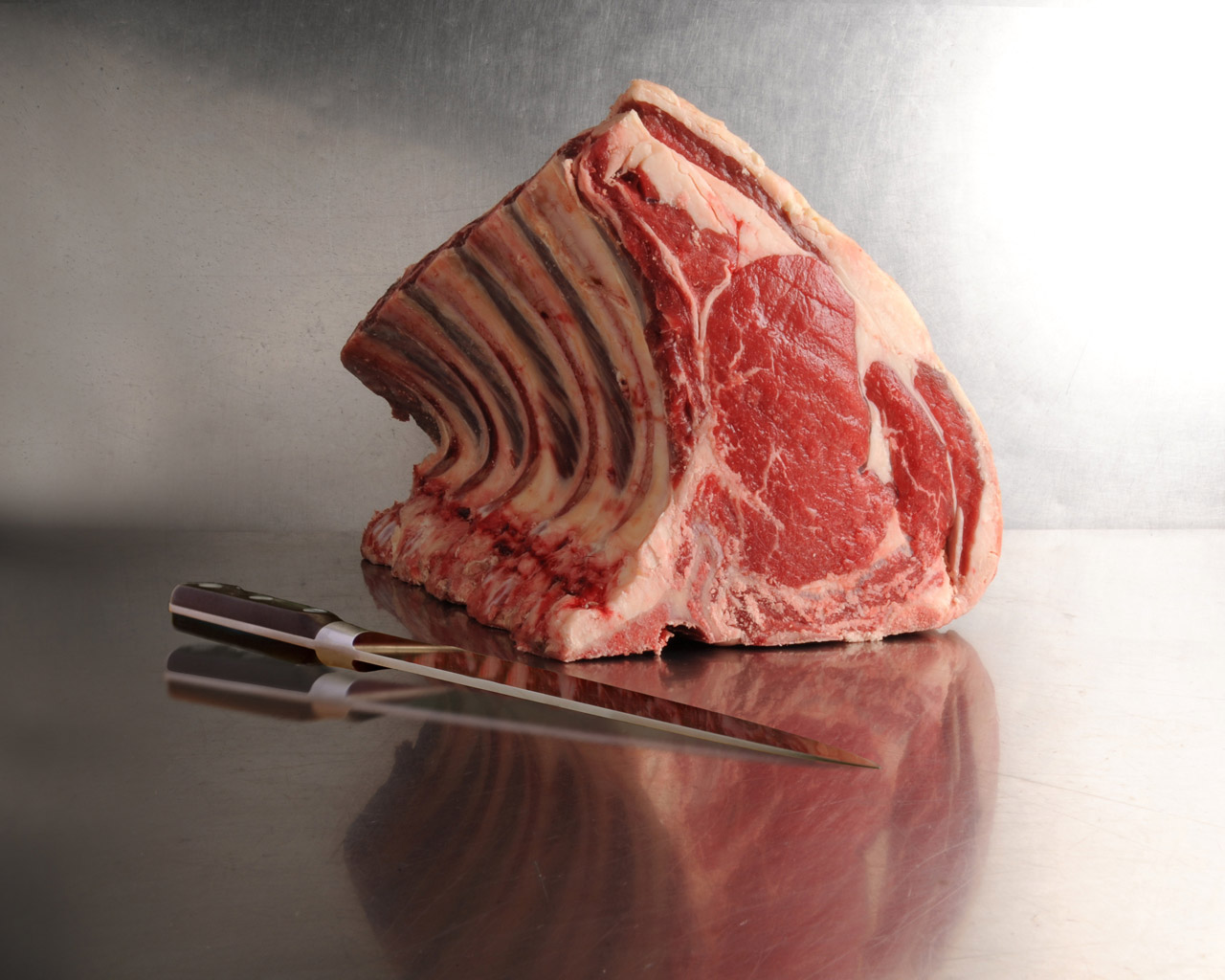Beef
The cuts of beef vary in their size and method of preparation. There are the cuts for grilling (hanger steaks, skirt steaks, flank steaks, prime rib, rib eye, the shin...) the cuts for broiling (filet, rump steak, aiguillette...) cuts for braising (collar meat, plate, round steak, brisket, shoulder, chuck...) the cuts for pot roast (stew meat from the plate, shank, shoulder...) and finally cuts for boiling (oxtail, fore shank...).
For cuts to grill or broil, the texture and the intensity of the taste vary according to where the muscle is placed on the carcass and its type of fibre. The cuts from the back (fillet, sirloin) are very tender. The further one descends on the back thigh, the cuts become tastier but are firmer. Choose the various cuts from the eye of the round for a good balance between taste and tenderness.
These cuts are often called the butcher's choice cuts and are often set aside for meat lovers. For the cuts for boiling or braising, the taste depends in essence on the amount of fat, easy to observe when purchasing the cut.
The presence of gristle differs from one cut to another, it enables the meat to be caramelised for long cooking dishes (pot roast, burgundy, stews). It is preferable to combine a lean cut with a fatty cut to obtain a dish that is sufficiently unguent.


- THE HOUSE OF DENAUX
- OUR PRODUCTS
- Charolles AOC* beef – aged exclusively on our premises
- Irish Hereford Prime Beef – exclusive importer
- Red Label suckling veal
- The black pig of the Bigorre
- The black bottomed pig of the Limousin region
- Red Label Limousin pork
- Red Label Quercy lamb
- Milk-fed lamb of the Pyrenees
- Salt marsh AOC lamb of Mont Saint-Michel
- Authentic cold cuts
- High quality offal
- THE CUTS
- AGING
- THE GUARANTEES
- GASTRONOMY
- News
- Shop online
- Press review
- Contact / Schedule store
